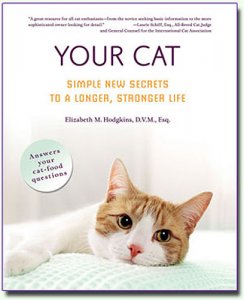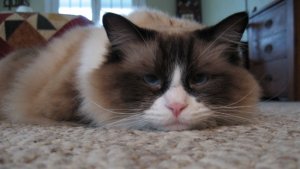Lynn B
Ideal_Rock
- Joined
- May 9, 2004
- Messages
- 5,609
Here are a few blurbs (below), copied and pasted from the following websites:
http://www.all-about-cats.com/your_cat.htm
http://cats.about.com/cs/catfood/a/canned_food.htm
http://cats.about.com/cs/catfood/a/tipsforchoosing.htm
This: In this controversial new book, dedicated veterinarian Elizabeth Hodgkins, DVM, raises the alarm regarding the serious flaws in the commercial diets we feed our cats and the nutritional diseases that result. She also explains everything cat owners need to know including kitten-rearing, the adult cat’s middle years, and how to care for the geriatric cat. The very latest treatment options for cat diseases are explained, and sections on litter box problems; parasites; obesity; feline diabetes; how to read a pet food label; and many more important issues are included.
And this: Today, most cat owners believe there is only one way to nourish their pets. That one way is an exclusive diet of commercially processed canned and dry cat foods. Unfortunately, many of these diets are actually poor alternatives to fresh, carnivore-friendly diets that the cat naturally requires. The fallacy that only commercial foods will support health in our cats is, in fact, little more than a remarkably successful marketing ploy by the companies who make the foods that owners believe are the best and only way to care for our cats properly.
And this: As recently as 25 years ago, there were few commercial cat food products and most pet cats still lived almost entirely on prey they captured on their own supplemented by human table foods, usually some type of meat. Only once cats began to be pets underfoot in the homes of their owners did commercially prepared, highly processed foods become a staple of the housecat’s diet. Today, unfortunately, these packaged foods are in most cases the exclusive diet of our cats.
Even though they are popular because of their convenience, these foods are really little more than the equivalent of convenience foods we humans eat. Like our own boxed, bagged, or fast-food type foods, commercial cat foods lack the freshness and nutrient quality of the cat’s natural meat-based wild diet and, in the case of all dry foods, are full of highly processed cereals and sugary vegetables (like potatoes) which are extremely poor quality ingredients for the obligatory carnivore. When we feed these foods as our cats’ exclusive diets, we subject them to health-robbing malnutrition.
She discourages ALL dry food and a lot of canned foods, and really makes a compelling case for a raw diet.
Has anyone else read her book? What did you think of the nutrition calculations explained on pages 261-265? I have often wondered what the numbers after crude protein, crude fat, crude fiber, moisture, ash, etc., really meant. Did anyone else figure out their cat’s food? I did all of Boo’s and was quite surprised (and not happily so!)













300x240.png)